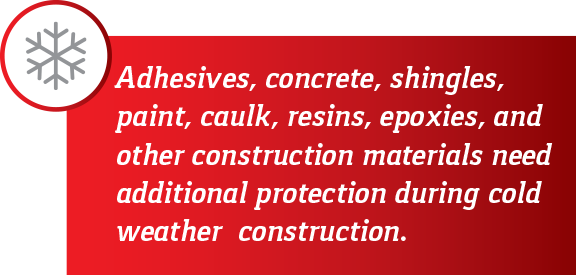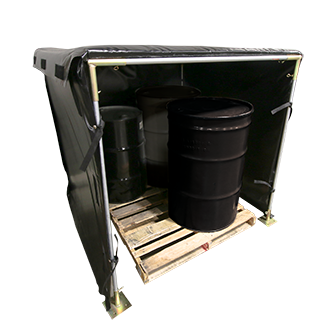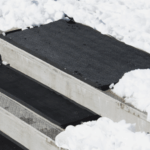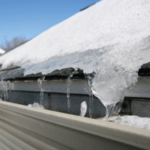Cold Weather Safety for Construction
The construction industry is a high risk industry, regardless of the time of year. But when cold temperatures, snow, ice, and wind are added to the mix, precautions must be in place to protect your workforce, equipment, materials, and the job.
Preparing and educating your employees on cold weather winter safety best practices can reduce the rate of illness, injury, and dangerous accidents. Always emphasize “safety first.”
Winter Construction Safety Tips
For trade specific guidelines on how to keep your crew and job site safe visit OSHA to start winter off on the right foot.
Know the forecast
Pay attention to changing weather conditions. Today we enjoy the benefit of real time updates on our phones and computers. Sign up for weather alert notifications so you can stay updated out in the field. When the weather outside is unsuitable for outside work, reschedule.
Limit exposure to the elements
Wind chill can take an existing temperature from workable to downright miserable. And when wind and low temperatures are combined, it can be hard to reduce exposure for workers. Your employees were not made to be outdoors in these elements for long periods of time. Shorten the duration of outside work and break up larger projects into smaller tasks. Educate yourself on early and late symptoms of hypothermia so you can keep a watchful eye on your crew. Keep a lookout for excessive shivering, fatigue, coordination loss, and disorientation. Have a plan in place to quickly warm and dry anyone exhibiting these symptoms.
Establish a warm break area
Outside work is absolutely unavoidable for the construction industry, but workers need a place away from the elements to take a break. A heated trailer or a tent with portable heaters and appropriate ventilation works great. Educate supervisors and workers on proper safety procedures with heating devices.
Emphasize proper hydration
We forget that our bodies sweat, even when it is cold outside, and especially when we are wearing extra layers of clothing. Keep plenty of water on hand. While many workers think caffeinated drinks will get them through their day, water is what the body really needs.
Require clothing that will keep workers warm and dry
Boots with non-slip soles, heavy coats, gloves, and hats are all essential for protecting the body from severe cold weather. Proper clothing is the first step in preventing hypothermia and frostbite and for cold weather protection.
Know the signs of frostbite and hypothermia
Even when employers do everything they can to protect workers, issues can still arise. Supervisors and workers need to know the symptoms of hypothermia and frostbite so that if anyone shows these signs, they can receive immediate medical attention.
Remove Snow and Ice
Check the job site early each day, before the work begins, for snow and ice accumulation and for any additional hazards. Be prepared with salt or sand and remove large patches of snow and ice. Snow and ice removal, if left to the crew, will slow down the job and deplete their energy.
Winterize and prepare vehicles
Before heading into the cold season, inspected all vehicles and equipment to determine if they are prepared for cold weather construction. Top off fluids, check tire tread and air pressure, and change filters. Equip all vehicles with winter kits that contain an ice scraper, snow brush, shovel, tow chain, flashlight with extra batteries, emergency flares, a blanket, snacks and water. Also, educate workers on what to do and who to call if they are stranded in a vehicle.
Prepare and protect equipment
In addition to preparing vehicles for winter safety, smaller construction equipment also needs attention. Air compressors work best in well-ventilated areas with an ambient temperature in the compressor system’s optimal range, typically 40-95°F. If the temperature around your compressor becomes too hot or too cold, the compressor may not start or may exhibit performance issues. Moisture control also becomes a factor. Moisture that becomes ice can accumulate and affect the way the system runs, blocking drainage and preventing efficient compression.
Protect Critical Materials
Adhesives, concrete, shingles, paint, caulk, resins, epoxies, and other construction materials need additional protection during cold weather construction. Winter safety also includes keeping these materials at proper temperatures for application. Failing to protect critical materials could result in shoddy work that affects the overall finished product.
Powerblanket Winter Construction Solutions
We know that shutting down for the “off season” is a financially risky proposition. With Powerblanket, there is no off season. We specialize in providing winter construction crews with the tools they need to get back to work.
Hot boxes are ideal for cold weather construction safety, freeze protection, transporting, job site heating, remote location use, and winter roofing. Standard Hot Boxes hold product between 100°F and 120°F (38°C and 49°C) –optional adjustable thermostatic controllers allow precise temperature control. They are quick and easy to assemble and transport from job site to job site. Heat and protect a wide variety of container shapes and sizes. Access doors on 2 sides provide you with easy access to your materials whenever you need them.
Powerblanket enables construction crews to take back control during the winter and get back on schedule. Protect expensive equipment, reduce wintertime waste, keep your workers safe, and keep operations running with Powerblanket. We also specialize in custom requests and quickly assess your needs and find the perfect temperature control products for you.
Contact us to find winter construction solutions for your needs 855.385.8516 or [email protected].
Frequently Asked Questions
How cold is too cold for construction?
When temperatures drop below 10°F, the risk of hypothermia and frostbite becomes significant, and it's advisable to postpone outdoor work or move it indoors until conditions improve.
Does OSHA have a cold weather rule?
While OSHA does not have a specific standard for cold environments, employers are required to ensure a workplace free from recognized hazards, including those related to winter weather.
What are the safety rules for cold weather?
Key safety rules for cold weather include limiting outdoor exposure, wearing layers of warm clothing, and avoiding overexertion to reduce the risk of cold-related health issues.
How cold is too cold for working conditions?
There is no legally defined temperature deemed too cold to work, but sub-zero temperatures or wind chills below -17 degrees suggest that staying indoors is advisable for safety.
The Powerblanket Hot Box is the perfect solution for your bulk material heating needs.







